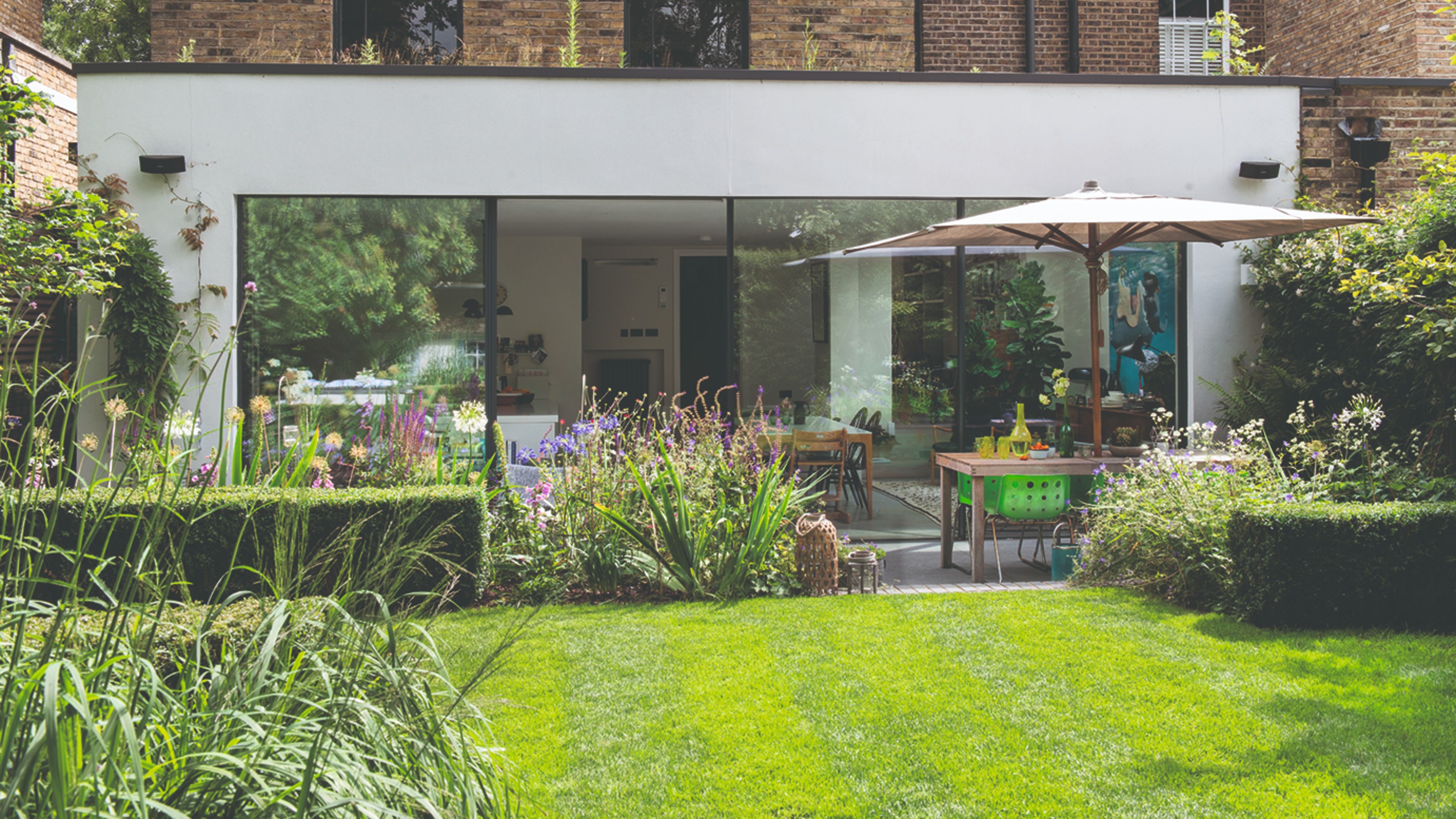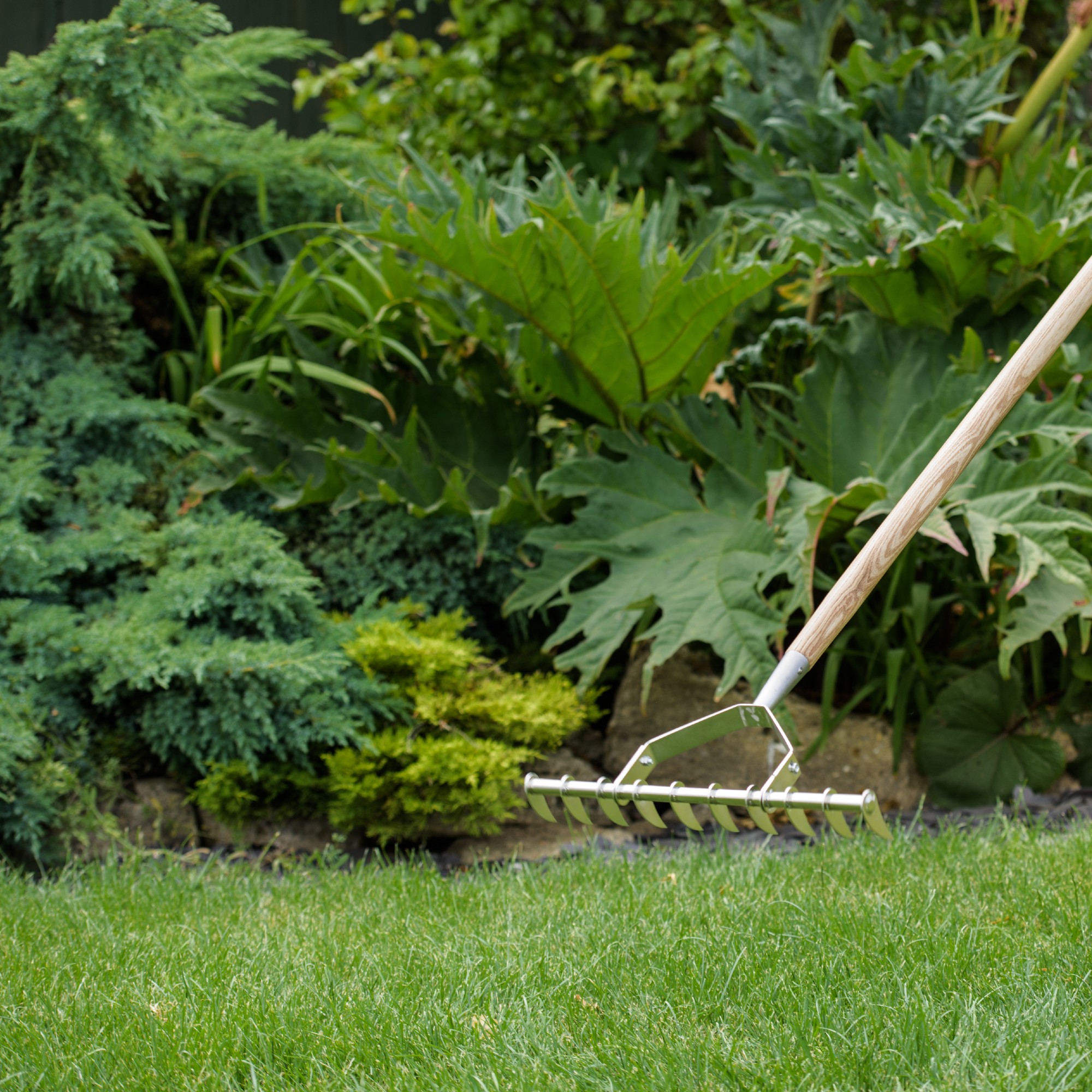How to aerate your lawn for healthier, stronger and greener grass
The step-by-step guide to aerating a lawn approved by gardening experts


Spring, along with autumn, is the perfect time to give your lawn some much-needed TLC after going through the harsh winter months. One of the lawn care jobs that you should tackle this time of year is aerating - but if you’re wondering how to aerate a lawn and what exactly it does to your garden’s grass, then don’t worry, we’ve got you covered.
Since knowing how to do it is just as important as knowing when to aerate a lawn, our gardening experts have shared their top tips, along with an easy-to-follow step-by-step guide so there’s no room for messing up.
Trust us, it’s an easy process and anyone can do it in just a few steps. So without further ado, let’s get lawn aerating!

How to aerate a lawn
First and foremost, let’s get one thing straight – what’s aerating? And why is it important?
‘The aim is to create small holes in the soil underneath your lawn, ideally removing a plug of soil,’ says George Pitcher, brand manager at Westland, specialising in lawns. ‘Aerating your lawn at least once per year will really help improve drainage, so you don’t suffer with puddles on your grass, but additionally, it will allow oxygen, water and nutrients to reach the roots of the grass, helping to give you a strong and healthy lawn.’
Now, with that out of the way, let’s see what tools you’ll need.
What you’ll need
‘You can use a mechanical or roller aerator to tackle large areas of lawn,’ says Fiona Jenkins, gardening expert at MyJobQuote.co.uk, the UK’s leading trades matching site. ‘Or you can use spiked shoes and forked aerating tools to manually complete smaller lawns. But if you don’t fancy buying specialist tools, a normal garden fork will also work.’
These are your options:
- Gardening fork like this one at Amazon
- Electric aerator like the Einhell GC-SA 1231/1 Electric Lawn Scarifier And Aerator at Amazon
- Manual aerating machine like this one at Amazon
- Aerating shoes like these from Garden Mile at Amazon

Fiona Jenkins is a UK-based landscaper with over twenty five years of experience in the industry. As a gardening expert for MyJobQuote, one of the UK's top trades-matching sites, Fiona offers her expert advice to MyJobQuote's tradespeople and homeowners, and has also been featured as a gardening expert for a range of reputable publications.

Pick the right time
As previously mentioned, getting the timing right is crucial. Both spring and autumn are the perfect times of the year to get your lawn aerating done. But as we find ourselves in spring, it’s ideal to include this job either in your April or March lawn care.
‘A great time to aerate the lawn is in early spring as the ground is starting to slightly warm up and the grass is beginning to grow again,’ says Steve Chilton, garden expert at LeisureBench. ‘You can also aerate your lawn in early autumn, so around September time. Doing it twice a year can be beneficial. Just make sure that it isn't too hot or too dry outside, and that the grass isn't waterlogged or excessively wet. The soil should be moist.’
George adds, ‘Plan to aerate your lawn when it is moist enough, ideally the day after rainfall. If the soil is really dry, it will make it hard to penetrate. You could also water your lawn the day before to stop it being too hard.’

Steve is a passionate and knowledgeable garden expert with several years of experience within the field. As the director of LeisureBench, an industry-leading garden furniture company, Steve has developed strong expertise for all things nature and plants.

Aerate your lawn
So now let’s improve your lawn drainage and its overall health with aerating.
‘If you're using a garden fork, then all you have to do is use it to cover the garden in holes. The holes should be around 12cm deep, and they should be spaced around 15cm apart from each other. It's important to ensure the holes aren't just light as this won't aerate your lawn properly,’ Steve explains.
If you’re using an electric aerator, the machine does most of the work for you really, making it the easier option.
Then finish by giving your lawn a nice watering.

FAQs
Should I scarify or aerate my lawn first?
Scarifying should definitely be done before aerating to make your life easier.
‘You should scarify a lawn first as this removes the thick layer of thatch between the grass and soil. This will make the job easier and ensures the holes you create reach into the ground to improve air circulation, drainage and feeding,’ Fiona says.

Should you aerate a wet or dry lawn?
As previously mentioned, it’s best to have a bit of a middle ground between wet and dry lawn and make sure the grass is moist to ensure successful aerating.
‘To get the best results, the ground should be moist. A dry lawn will be hard to aerate if the ground is hard and if the lawn is really wet, the ground won’t be stable enough. So, the holes are likely to seal up again,’ Fiona explains.
Now, that wasn’t so hard, was it?
Get the Ideal Home Newsletter
Sign up to our newsletter for style and decor inspiration, house makeovers, project advice and more.

Sara Hesikova has been a Content Editor at Ideal Home since June 2024, starting at the title as a News Writer in July 2023. She is now also the Ideal Home Certified Expert in Training on Furniture, and so far has tested 80 different sofas.
Graduating from London College of Fashion with a bachelor’s degree in fashion journalism in 2016, she got her start in niche fashion and lifestyle magazines like Glass and Alvar as a writer and editor before making the leap into interiors, working with the likes of 91 Magazine and copywriting for luxury bed linen brand Yves Delorme among others.
-
 Will a conservatory add value to your home and how can you maximise it?
Will a conservatory add value to your home and how can you maximise it?This is what the pros say
By Amy Reeves
-
 I’ve been looking for a new signature scent for my home and The White Company's new fragrance is the exact summer holiday smell I needed
I’ve been looking for a new signature scent for my home and The White Company's new fragrance is the exact summer holiday smell I neededSantorini smells fresh, summery and sophisticated
By Kezia Reynolds
-
 How to remove algae from garden walls in five steps – and the cleaning product experts rave about for tackling it fast
How to remove algae from garden walls in five steps – and the cleaning product experts rave about for tackling it fastExperts share their top tips for getting garden walls algae-free
By Katie Sims